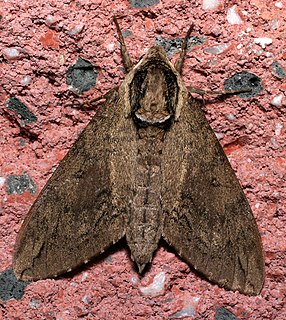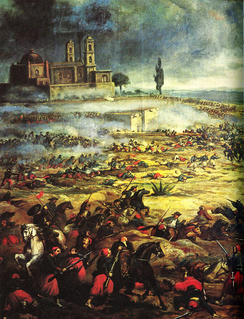
In Greek mythology, Phoenix was the son of king Amyntor. Because of a dispute with his father, Phoenix fled to Phthia where he became king of the Dolopians, and tutor of the young Achilles, whom he accompanied to the Trojan War. After Achilles had in anger withdrawn from the war, Phoeinix tried to persuade Achilles to return.

The Day of the Dead is a Mexican holiday celebrated in Mexico and elsewhere associated with the Catholic celebrations of All Saints' Day and All Souls' Day, and is held on November 1 and 2. The multi-day holiday involves family and friends gathering to pray for and to remember friends and family members who have died. It is commonly portrayed as a day of celebration rather than mourning. Mexican academics are divided on whether the festivity has indigenous pre-Hispanic roots or whether it is a 20th-century rebranded version of a Spanish tradition developed by the presidency of Lázaro Cárdenas to encourage Mexican nationalism through an "Aztec" identity. The festivity has become a national symbol and as such is taught in the nation's school system, typically asserting a native origin. In 2008, the tradition was inscribed in the Representative List of the Intangible Cultural Heritage of Humanity by UNESCO.

Selena Quintanilla-Pérez was an American singer, songwriter, spokesperson, businesswoman, model, actress, and fashion designer. Referred to as the "Queen of Tejano music", her contributions to music and fashion made her one of the most celebrated Mexican-American entertainers of the late 20th century. Billboard magazine named her the top-selling Latin artist of the 1990s decade, while her posthumous collaboration with MAC cosmetics became the best-selling celebrity collection in cosmetics history. Media outlets called her the "Tejano Madonna" for her clothing choices. She also ranks among the most influential Latin artists of all time and is credited for catapulting a music genre into the mainstream market.
In Greek mythology, Amyntor may refer to the following figures:
This article contains information about the literary events and publications of 1699.

David Mallet (c.1705–1765) was a Scottish poet and dramatist.
In Greek mythology, Tlepolemus was the leader of the Rhodian forces in the Trojan War.

Mexico, officially the United Mexican States, is a country in the southern portion of North America. It is bordered to the north by the United States; to the south and west by the Pacific Ocean; to the southeast by Guatemala, Belize, and the Caribbean Sea; and to the east by the Gulf of Mexico. Mexico covers 1,972,550 square kilometers (761,610 sq mi), making it the world's 13th-largest country by area; with approximately 126,014,024 inhabitants, it is the 10th-most-populous country and has the most Spanish-speakers. Mexico is organized as a federation comprising 31 states and Mexico City, its capital and largest metropolis. Other major urban areas include Guadalajara, Monterrey, Puebla, Toluca, Tijuana, Ciudad Juárez, and León.

Joaquín Archivaldo Guzmán Loera, commonly known as "El Chapo" because of his 168 cm stature, is a Mexican former drug lord and former leader of the Sinaloa Cartel, an international crime syndicate. He is considered to have been the most powerful drug trafficker in the world.

Ceratomia is a genus of hawkmoths. The genus was erected by Thaddeus William Harris in 1839. Species include:

Ceratomia amyntor, the elm sphinx or four-horned sphinx, is a North American moth in the family Sphingidae. The species was first described by Carl Geyer in 1835. It has a wingspan of 3+1⁄4-4+1⁄2 inches. As the name suggests, the larvae (caterpillars) feed on elm trees (Ulmus), but they can also be found feeding on birch (Betula), basswood (Tilia), and cherry (Prunus). When the caterpillars are ready, they crawl to the bottom of the host tree, where they crawl underneath the soil and pupate and may overwinter underground if late enough into the year. Vegetable growers should be aware of this larvae due to its insatiable appetite. One of these larvae are capable in devouring huge amounts of plant's foliage and even succulent stems.

Cyanophrys is a genus of butterflies in the family Lycaenidae erected by William J. Clench in 1961. The species of this genus are found in the Nearctic and Neotropical realms.
In Greek mythology, Crantor was a son of Amyntor and possibly Hippodamia or Cleobule. He was probably the brother of Astydameia and Phoenix.
Amyntas is the name of several prominent Greek and Hellenistic men. The word is derived from Greek "amyntor" meaning "defender".

Cinco de Mayo is an annual celebration held on May 5, which commemorates the anniversary of Mexico's victory over the French Empire at the Battle of Puebla in 1862. Led by General Ignacio Zaragoza, the victory of a smaller, poorly equipped Mexican force against the larger and better armed French army was a morale boost for the Mexicans. Zaragoza died months after the battle from an illness, and a larger French force ultimately defeated the Mexican army at the Second Battle of Puebla and occupied Mexico City.
In Greek mythology, the name Ctesippus may refer to:
Amyntor (Ancient Greek: Ἀμύντωρ Amýntor "defender") was the name of a 4th-century BC Macedonian aristocrat, possibly of Athenian descent. He was the father of Hephaestion Amyntoros, who was a close companion and lieutenant to Alexander the Great. The full history of Hephaestion's lineage is unknown. However, Jeanne Reames has suggested that he descended from Athenian expatriates to Macedon. The most popular piece of evidence pointing to such a connection is in name-tracing. "Hephaestion" is the name of the Temple of Hephaestus overlooking the Ancient Agora of Athens, near the Acropolis, a name which hardly appears at all in Macedon at this time period.
In Greek mythology, Amyntor was the son of Ormenus, and a king of Eleon or Ormenium. Amyntor's son Phoenix, on his mother's urgings, had sex with his father's concubine, Clytia or Phthia. Amyntor, discovering this, called upon the Erinyes to curse him with childlessness. In a later version of the story, Phoenix was falsely accused by Amyntor's mistress and was blinded by his father, but Chiron restored his sight.










